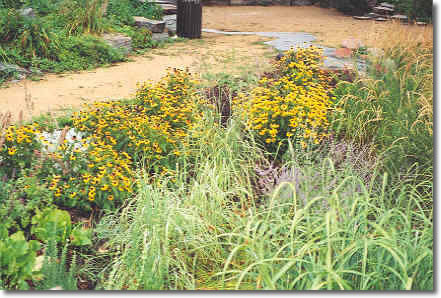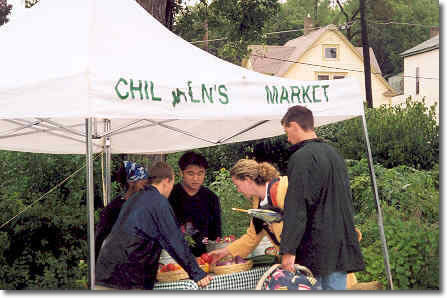Drinking Water Protection
- Drinking Water Protection Home
- About Us
- A-Z Index of Contaminants in Water
- Community Public Water Supply
- Drinking Water Grants and Loans
- Drinking Water Institute
- Drinking Water in Schools and Child Cares
- Drinking Water Revolving Fund
- Laws and Rules
- Noncommunity Public Water Supply
- Source Water Protection
- Water Operator and Certification Training
- Drinking Water Protection Contacts
Related Topics
- Annual Reports
- Drinking Water Risk Communication Toolkit
- Drinking Water Protection External Resources
- Fact Sheets
- Forms
- Invisible Heroes Videos: Minnesota's Drinking Water Providers
- Noncom Notes Newsletter
- Sample Collection Procedures (videos, pictures, written instructions)
- Waterline Newsletter
Related Sites
- 10 States Standards
- Clean Water Fund
- Health Risk Assessment – Guidance Values and Standards for Water
- Minnesota Well Index
- Water and Health
- Wells and Borings
Environmental Health Division
Swede Hollow Continues Immigrant Tradition with a Focus on Water
From the Winter 2001-02 Waterline
Quarterly Newsletter of the Minnesota Department of Health Public Water Supply Unit, Waterline
A complete list of feature stories can be found on the Waterline webpage.
Once populated with shanties in the shadows of mansions on the bluffs above, St. Paul’s Swede Hollow has its roots as an immigrant community.
Edward Phelan became the first white inhabitant of the hollow in 1841, and the creek that once ran by his log cabin still bears his name. Mills and breweries were established in the ensuing decades with the fledgling industries attracting Swedish immigrants. Over time, the ethnic mix changed as Italians and then Mexican-Americans replaced earlier residents, who by this time had moved “up onto the street.”
Life in Swede Hollow was primitive, with no electricity nor municipal services. The inhabitants were out of sight and, for the most part, out of mind until the 1950s when city officials declared the area a health hazard and ordered the remaining families out and their homes razed.
The houses and people are gone from Swede Hollow, the valley is vacant, and the hollow itself has been transformed into a park; however, its name lives on and now refers to the high ground surrounding the former community. And it is in this area, as well as in the adjacent East Side neighborhoods, that a new immigrant population is carrying on the heritage of Swede Hollow.
The original inhabitants of Swede Hollow got their water from springs and used Phelan Creek as their sewer, leading to water and sanitation problems. The current residents of the area focus on the importance of the area as a watershed with particular attention to the Mississippi River.
“A new immigrant population is now happening,” says Ruth Murphy, the executive director of the Community Design Center of Minnesota, a 32-year-old non-profit corporation that helps to revitalize low-to-moderate-income communities by providing technical assistance and operating programs. Its St. Paul offices are in a wedge-shaped block, next to the Swede Hollow Café, which is adjacent to a corner lot that serves as the site of many of the center's activities as well a couple of rain gardens.
 |
 |
| One of the rain gardens is fed from the city’s storm sewer; the other gets water from the run-off of the building that houses the Community Design Center. | A children’s farmer’s market is held every Saturday during the summer in Swede Hollow. |
“We’re using the East Side as the actual hands-on training ground for kids to understand their own environment and to understand the opportunity to be a steward for their own community,” Murphy continues. “One of the reasons we're doing this is that often we learn about the environment that's far away-a rain forest in another part of the world-but we never really understand what is happening in our own backyard and the environmental aspects and opportunities for creating a sound environment right where we live.”
In using the neighborhood ecology for teaching about the environment, Murphy notes that, “This community sits upon one of the great rivers of the world, and we need to know about it and appreciate how valuable it is to us in a daily way and also that we here-the children and the people who live here-have a responsibility and that they can learn how to enhance the Mississippi River instead of creating problems for the river.
’We’re using the river as the focal point for teaching about stewardship and ecology and food and nutrition.”
Toward these ends, the Community Design Center has a Youth Enterprise in Food and Ecology program that includes children’s gardens where organic produce, flowers, and herbs are grown; a farmer’s market by the rain gardens outside the Swede Hollow Café each Saturday in the summer; a community-supported agriculture program in which members get a bag of produce and recipes each week; year-round teaching of environmental science; and a pair of intern programs.
One of the intern programs is for children between the ages of 10 and 13, who work four-to-six hours a week. Their activities include environmental arts projects, such as making herbal vinegar and wreathes out of dried herbs, products that they then sell. The Junior Interns take field trips in the winter to businesses and other sites to learn more about careers in food, health, and ecology. During the growing season, they help plant and maintain the rain gardens and sell produce to local restaurants in addition to operating the farmer's market and the community-supported agricultural program.
For older children is the Youth Ecology Services, Teaching Ecological Action and Mentoring (YES TEAM) program, which started this year with six students from the area. Five of the YES TEAM members are Hmong, and the other is Cambodian. The YES TEAM works 20 hours a week with the Community Design Center, providing youth with special leadership training in health, ecology, and community service. These interns also have opportunities to make connections and network with professionals in various career fields to obtain work experience and skills.
Swede Hollow and the area around it have changed in many ways over the last half-century. But, in many ways, the insights and philosophy of those who call it home are the same.
“Now there is a new group of immigrants who are making the East Side their home,” says Murphy, “so it’s a very fitting program to use the Hollow and surrounding area as a focal point.”

Swede Hollow
Go to > top.